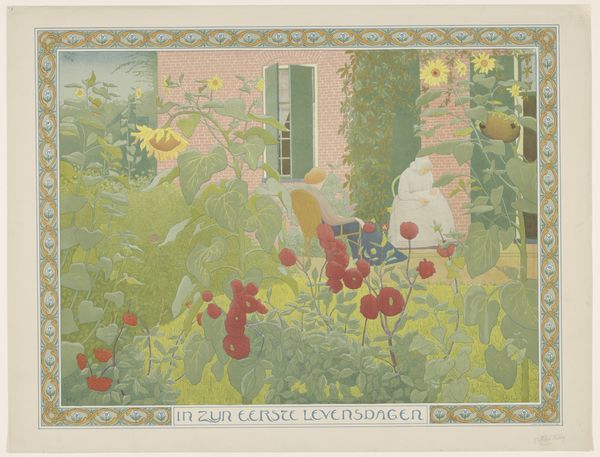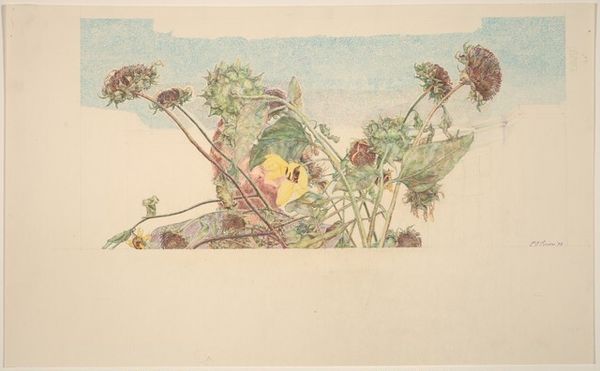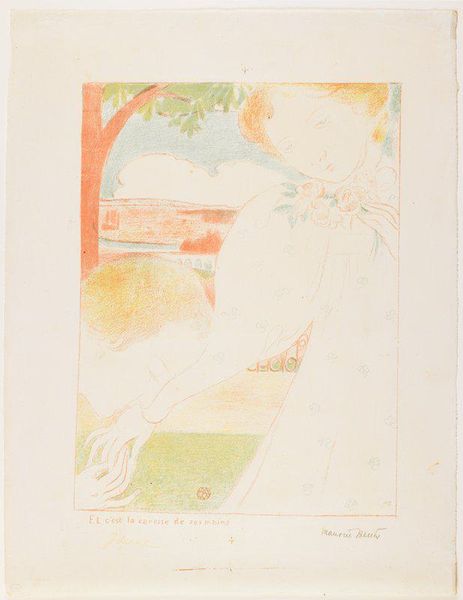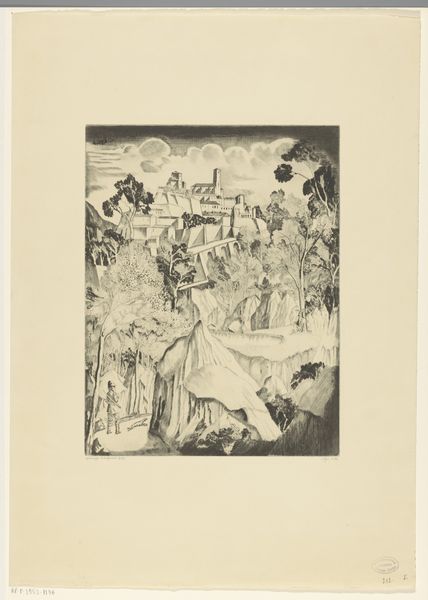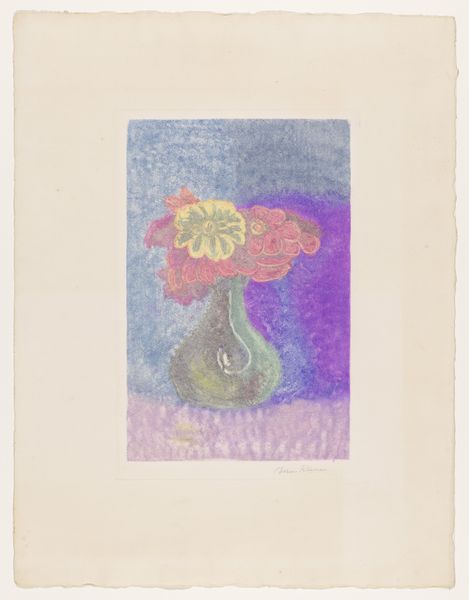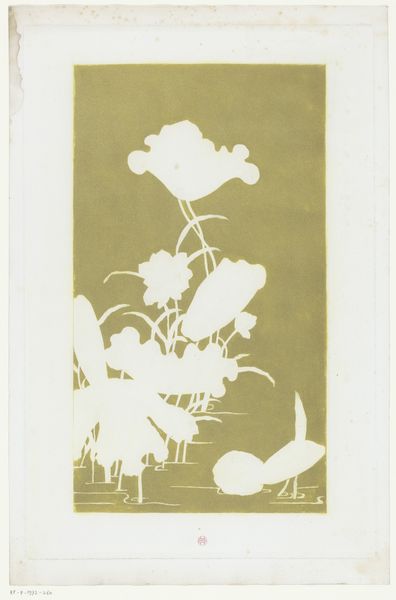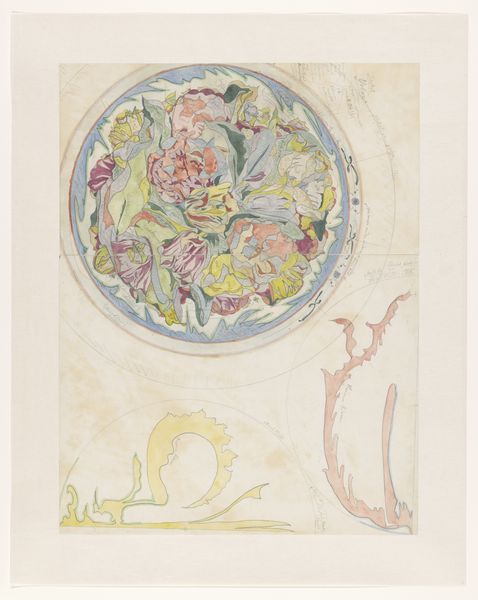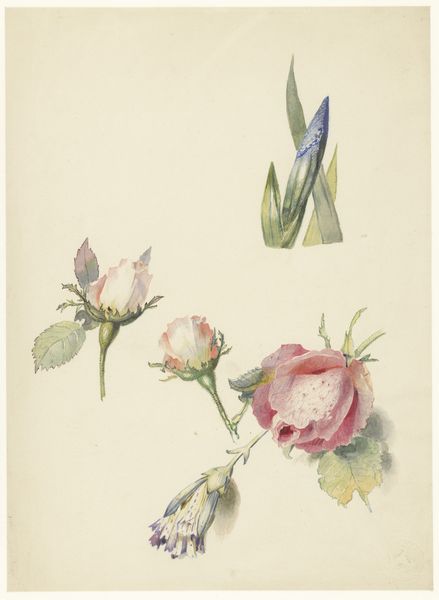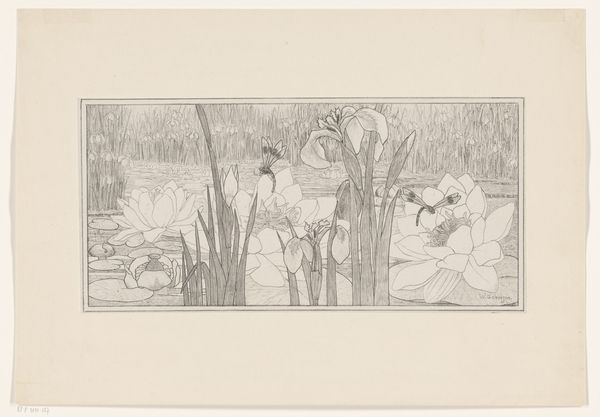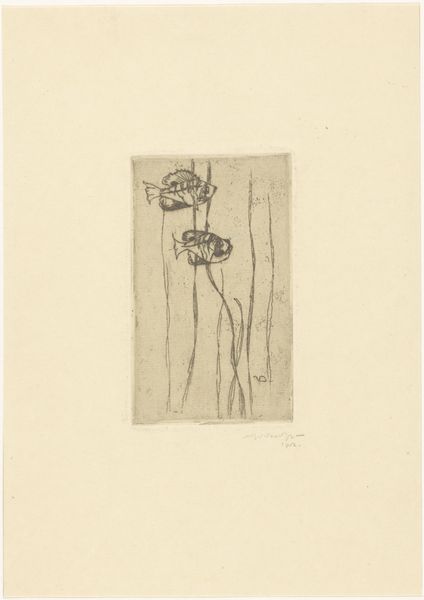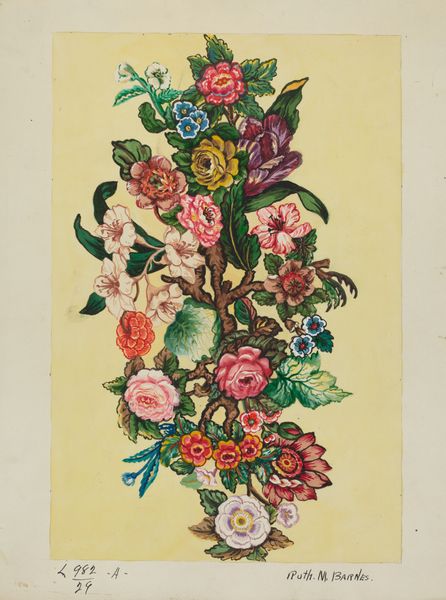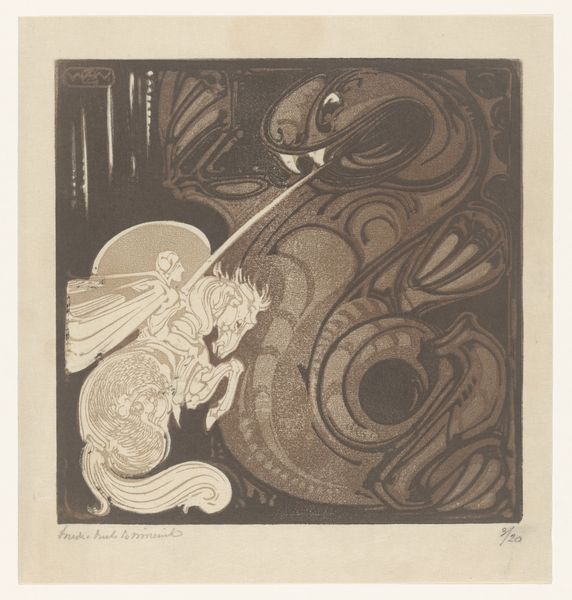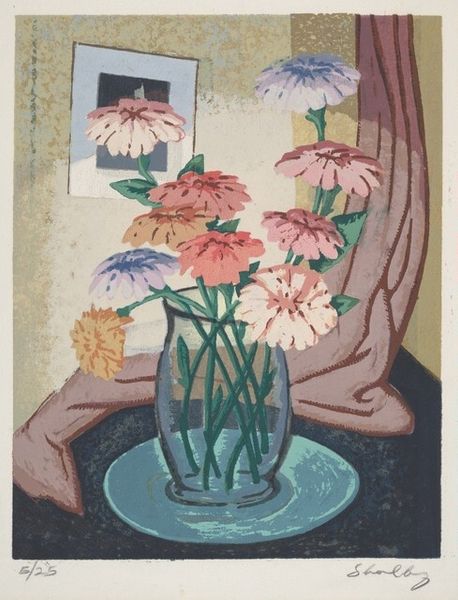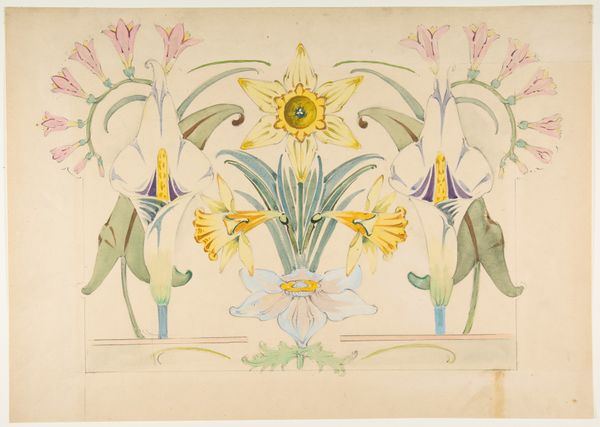
print, linocut, watercolor
#
garden
#
art-nouveau
#
pastel soft colours
# print
#
linocut
#
landscape
#
flower
#
figuration
#
watercolor
#
linocut print
#
symbolism
#
watercolour illustration
Dimensions: height 556 mm, width 415 mm
Copyright: Rijks Museum: Open Domain
Curator: Let’s discuss this striking print, "Woman Receiving a Vision in a Garden," created around 1897 by Georges de Feure, housed right here at the Rijksmuseum. It combines linocut and watercolor. What are your first thoughts? Editor: Dreamlike, almost unsettling. The pastel colors and stylized forms give it an ethereal quality, but there's something about the woman’s isolation and the almost monstrous-looking flora that feels ominous. Curator: Indeed, it’s a superb example of symbolism and Art Nouveau aesthetics mingling. De Feure operated within a late 19th-century context where artists sought to express inner psychological states and challenge academic artistic traditions. The work was born of a historical revolt against realism. Editor: Absolutely, the focus on inner experience is evident. It is the tension between the woman's vulnerability, her possible vision and the rather dominating presence of those large, maybe poisonous plants that I find really captivating from a feminist lens. The woman appears passively receiving; it raises questions about agency, the male gaze, and female representation. Is this a liberation, a dream of possibilities or a cage? Curator: I see that point. De Feure designed for upper middle class patrons, he captured their sensibilities, anxieties and their understanding of women at the time. Editor: These tensions surely are relevant still today: are women subjects in their own experiences or decorative objects? Does accessing vision imply control or submission? These readings show us we must resist simplifying women in art to fixed interpretations. Curator: These open narratives around femininity, dreams, and natural forms offered avenues for people to contemplate and engage. The print as a medium democratized art, making these radical styles accessible beyond the elite. Editor: True, the print medium itself enabled dissemination, extending those avenues for interpretation and meaning making around emerging cultural topics and gendered social roles beyond just wealthy buyers. Curator: I appreciate how you've drawn out those deeper social implications tied up in de Feure's alluring aesthetic. Editor: And I see how your contextualizing reveals this piece not just as a beautiful image, but as an emblem of the complex era that bore it.
Comments
No comments
Be the first to comment and join the conversation on the ultimate creative platform.
